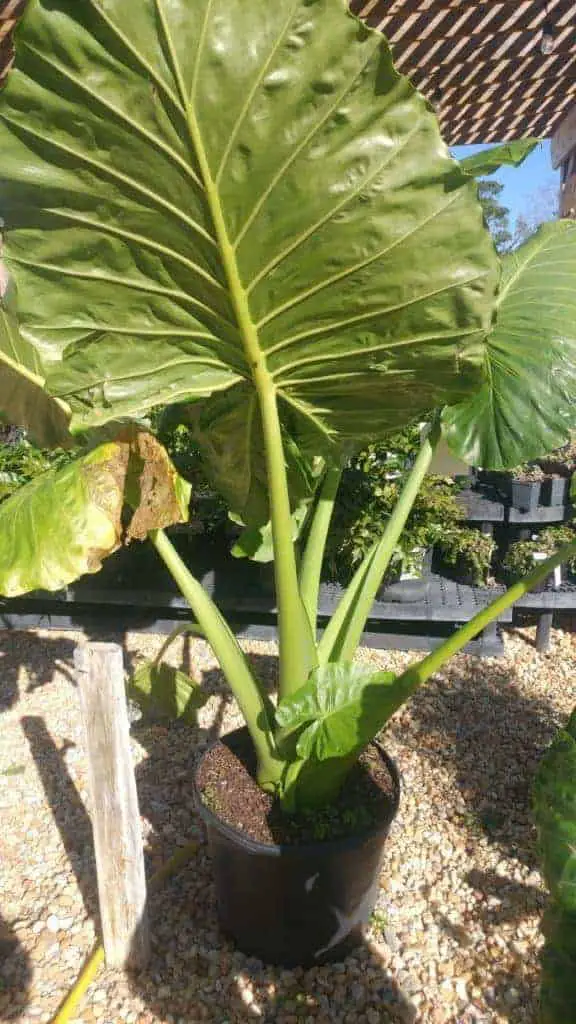Elephant ear is the common name for several plants including:
-Colocasia
-Alocasia
-Dieffenbachia
-Xanthosoma
-Caladium
-Taro
To find your growing zone, refer to the growing zone map at the bottom of the page.
| Plant | Growing zone(depends on var.) | Water requirements | Light | Height |
| Colocasia | 8-12 | Wet, even standing water | Full sun- part shade | 3-5 ft |
| Alocasia | 8-12 | Moist, NOT standing water, well-drained | Shade – full sun (if constantly damp) | 3-5 ft |
| Caladium | 7-12 | Moist but well-drained | Shade to part sun | 12-30” |
| Xanthosoma | 8-12 | Moist even standing water | Sun to part sun | 4 ft |
| Dieffenbachia | 10-12 | Moist but well-drained | Filtered sun | In garden 20 ftPotted 5 ft |
Can elephant ears be grown in tropical areas? The answer is yes, these can be grown in tropical areas, however with caladiums, after a few months of foliage, they are programmed to go into a dormancy period, and in zones 11 and 12, many gardeners are not looking for plants that go dormant. Please leave comments if you are a gardener in a warmer climate and let me know your experiences with caladiums.
How to store Elephant Ears for the winter in cooler climates.
After the tops have been hit by frost, dig up and brush the soil off of the corm (thickened storage portion of the stem, bulb-like) and leave in a dry, warm (60 deg F), and well-ventilated spot for a week or more. This allows the leaves to move their energy into the corm to store for the winter. After a week or 2, remove the leaves, and pack the corms in dry peat moss, vermiculite, or sand in a breathable container (not waterproof container)…like a cardboard box or paper bag. Store in a warm area for the winter, preferably around 60 deg F. If you have a frost-free area in your garage, or pantry, that should be fine too. There is ideal, and then there is, what will work in a pinch.
How to plant elephant ear.
Success in planting either Colocasia, Alocasia, or other elephant ear corms (bulbs) is dependant on waiting until the ground has warmed up to above 41 degrees F (5 C) Waiting is the key. Wait for the ground to warm up. Do not be surprised if you do not see any above the ground growth for 3 weeks after planting, and this is IF the soil has warmed up. Caladiums need the soil even warmer, warmed to 70 deg F before planting. This is why many choose to either purchase at the garden center already growing, or start early indoors.
| plant | Soil temperature | depth | Time until top growth |
| Colocasia | 65 | 4″ | 3 weeks |
| Alocasia | 65 | 4″ | 3 weeks |
| Xanthosoma | 65 | 3″ | 3-4 weeks |
| Caladium | 70 | 4″ | 3-4weeks |
| Dieffenbachia | 65 | Same level as in the pot. | Plant as a started plant |
To find your growing zone, refer to the growing zone map below.
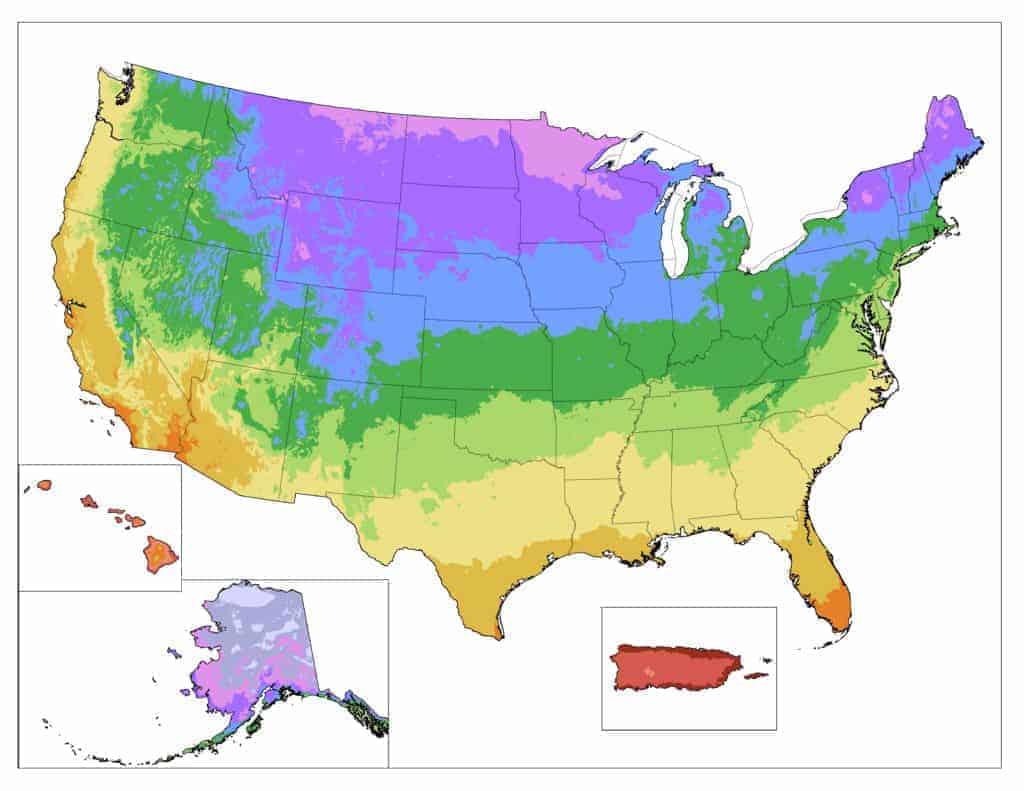
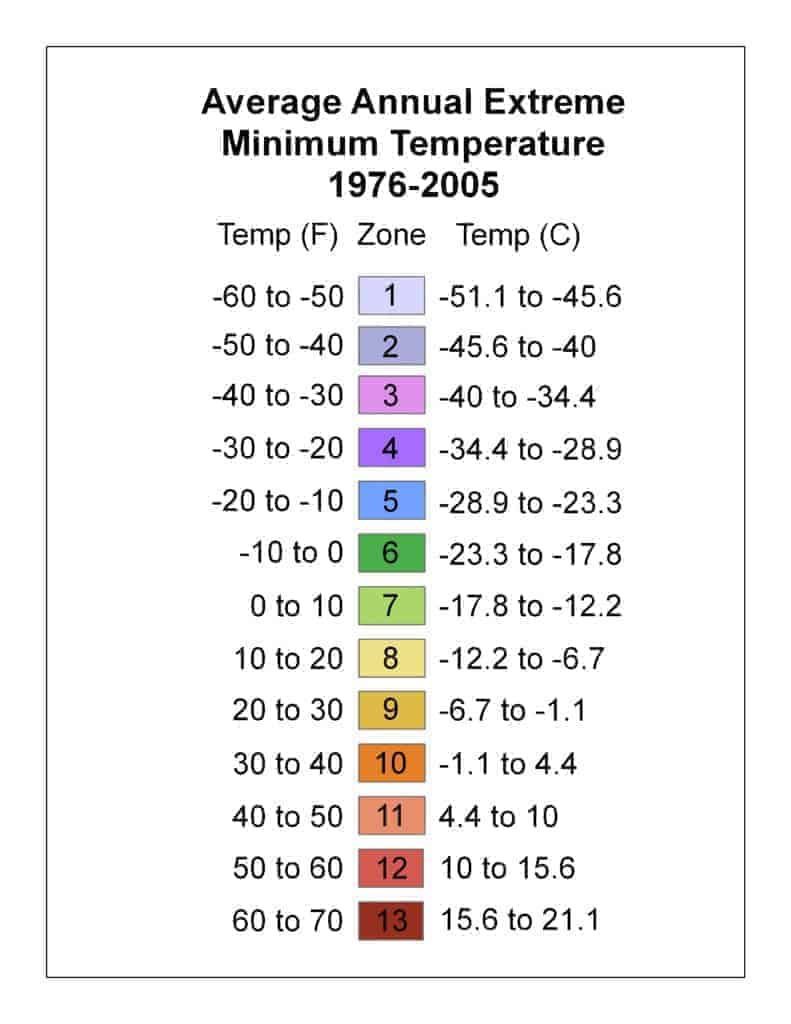
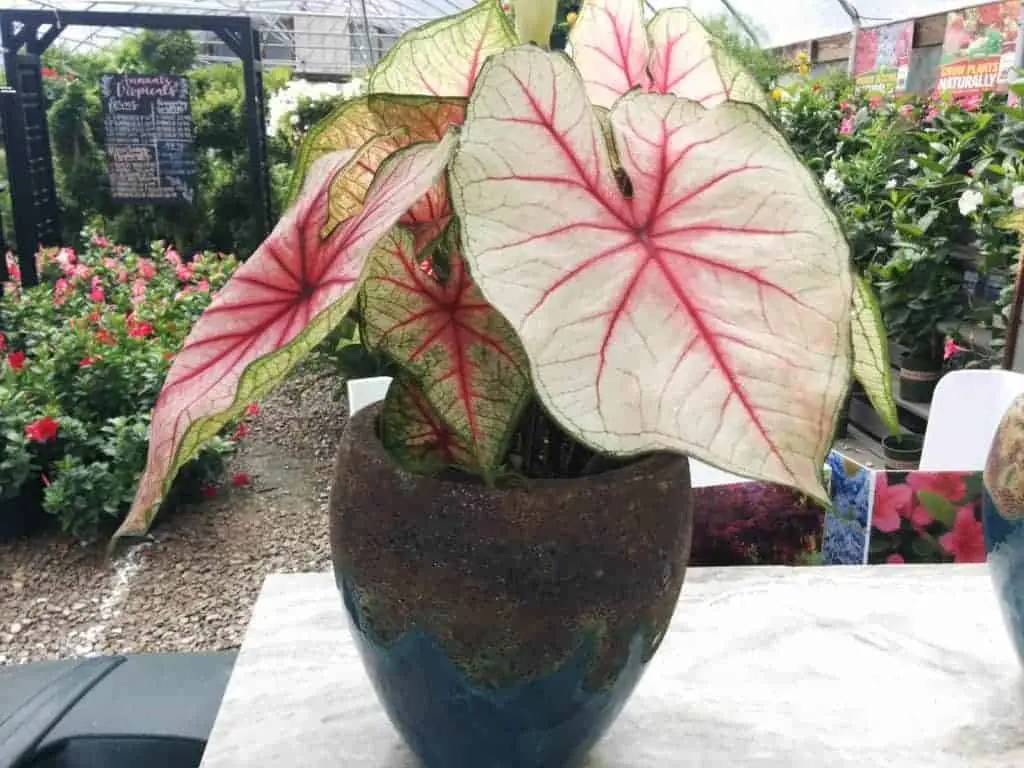
Related Questions:
What is the difference between a Alocacia and a Colocacia?
Both of these plants’ common name is elephant ear, and both are similar in size, growing to 3-5 ft (1-1.5 m). Alocasia leaves stretch upwards while the colocasia hang downwards from the stalk. If you want to grow an elephant ear in a half-day sun to a shader site, grow Alocasia or the smaller caladium. If a sunny spot, choose colocasia instead.
What is the difference between a bulb and a corm?
A bulb is a modified stem, short, enveloped with leaves that are attached at the base. A bulb has defined rings when cut in half. A corm is a swollen storage mass. The corm storage is used up to grow the next spring, and a new corm is grown for storage in the fall. Both are modifications to allow the plant to survive a dormant period. Corn vs bulb, this nomenclature only makes a technical storage mechanism difference, and are commonly used interchangeably in conversation.
Should you soak elephant ears before planting?
Elephant ear corms do not need to be soaked prior to planting, however, it may speed sprouting, but only if the soil has warmed up, and the soil dry to start with. If the soil has not warmed up enough, pre-soaking the elephant ear can speed rot setting in destroying the corm.
How long will an elephant ear last?
All elephant ear plants are tropical and sensitive to frost, so the foliage will only last while temperatures are above freezing. Caladiums often reduce in size and need replacing every few years. Alocasia and colocasia will increase in size each year and will last indefinitely with good care.
-
Should You Buy It? Cercis canadensis ‘Flame Thrower’ Redbud

If you will take the time to make sure this tree remains vigorous, it is well worth it! A stellar new tree with loads of color and interest even when
-
Japanese Maples W/ Unusual Peach Color on New Leaves In The Spring
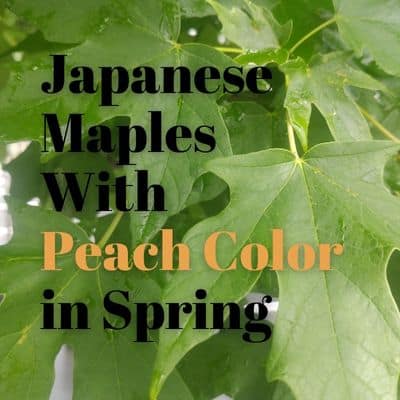
ACER CIRCINATUM ‘SUNNY SISTER’ 6-8 6-7 peach lt green yellow/ orange Amoenum upright ACER ELEGANTULUM X PALMATUM ‘JOHNNIE’S GIANT’ 6-9 FAST 15 Peach dk green yellow/ orange Matsumurae upright ACER
-
What Japanese Maples Are Orange In The Fall?
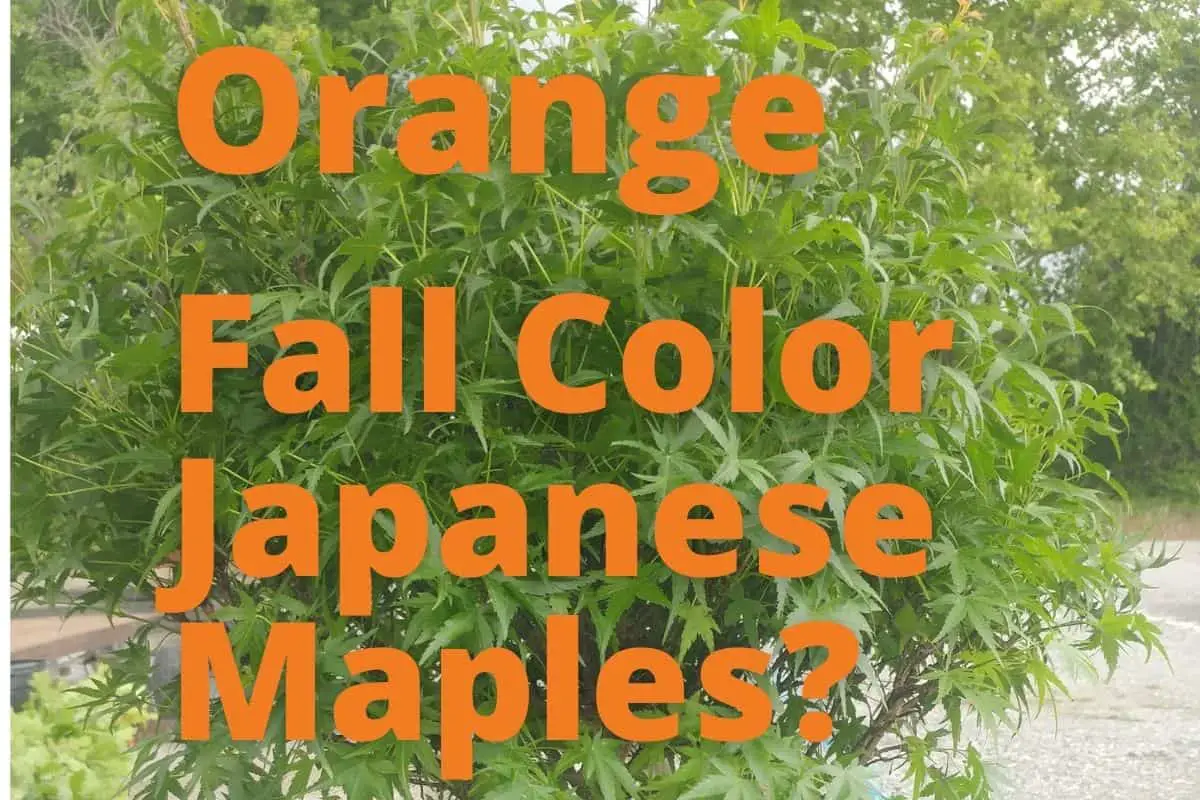
Latin name zones height 10-15 yrs spring color summer color fall color leaf type tree shape ACER JAPONICUM ‘EMMETT’S PUMPKIN’ FULL MOON 5-9 12-15 org/over green dark green orange Palmatum
-
How To Fertilize Your Hedge – 3 Steps

Choose correct fertilizer Determine correct amount of fertilizer Fertilize (verb) Depending on the type of hedge, and the size/age of your hedge, the type of fertilizer will change. Keep in
References:
https://www.cabi.org/isc/datasheet/56989 invasive plant list – wet tropical, Invasive Species Compendium
http://www.missouribotanicalgarden.org/PlantFinder/PlantFinderDetails.aspx?kempercode=c752 Missouri Botanic Garden, Xanthosoma sagittifolium


